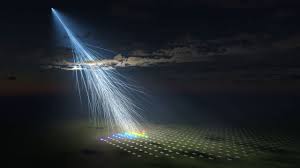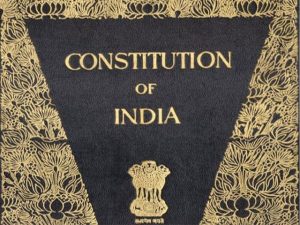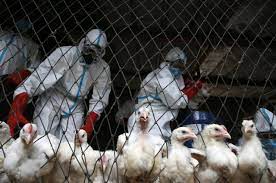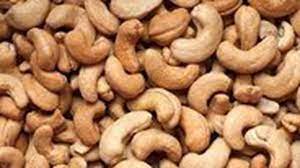Today’s Current Affairs: 27th Nov 2023 for UPSC IAS exams, State PSC exams, SSC CGL, State SSC, RRB, Railways, Banking Exam & IBPS, etc
Table of Contents
2D Protein Monolayer Unravels Amyloidosis:

Researchers have achieved a significant breakthrough in disease study through the creation of a two-dimensional (2D) protein monolayer using lysozyme molecules
Highlights of the Research:
- Scientists assembled lysozyme molecules into a 2D monolayer at the interface of a pure water subphase.
- These meticulously arranged layers of lysozyme, positioned at different interfaces, provide an exceptional model for delving into the complexities of Amyloidosis.
- Employing the sophisticated Langmuir-Blodgett (LB) technique was crucial in forming this specialized two-dimensional protein layer.
- The Langmuir-Blodgett technique is a process used to create monolayers of molecules, including proteins, at air-water and air-solid interfaces.
- The changes observed in the structure and shape of lysozyme molecules under different pH conditions remarkably mirror the abnormalities seen in Amyloidosis.
- This groundbreaking research not only paves the way for a more profound comprehension of Amyloidosis but also establishes a versatile platform for probing disease mechanisms.
- Furthermore, it presents exciting possibilities for exploring nanotechnology applications within the realm of protein science.
Kambala Buffalo Race:

The traditional buffalo race, Kambala, is set to take place for the first time in Bengaluru, Karnataka.
- Kambala is a buffalo race held in Coastal Karnataka districts (Udupi and Dakshina Kannada) during the winter months when farmers harvest their paddy crops.
- The race is held on two parallel tracks filled with mud and water. Each pair of buffaloes will also have a jockey, or ‘Kambala runner’ to control and command the animals on the track.
- The team that wins qualifies for higher rounds till a champion emerges.
- Apart from winning the race, targets also include splashing water; in fact, some winners are even declared on the amount of water splashed; this is called ‘kolu’.
16th World Wushu Championship:

The 16th World Wushu Championships recently concluded in Fort Worth, Texas, USA.
- Among the standout performers from India, Roshibina Devi (silver) , Kushal Kumar (bronze) and Chavi (bronze) demonstrated remarkable skill and resilience in their respective weight categories.
- It was organized by the United States of America Wushu-Kungfu Federation (USAWKF) under the auspices of the International Wushu Federation (IWUF).
- Wushu is a martial art that originated in China and encompasses various forms and styles. It’s a disciplined and highly stylized form of combat and self-defense.
2nd CII India Nordic-Baltic Business Conclave 2023:

The 2nd CII (Confederation of Indian Industries) India Nordic-Baltic Business Conclave 2023 was held in New Delhi, aiming to foster collaboration between India and the Nordic Baltic Eight (NB8) countries, known for their prowess in innovation and technology.
Highlights of the Conclave:
- Discussions focused on transforming food systems towards sustainability by sharing experiences, innovations, and best practices between India and the Nordic-Baltic nations.
- Collaboration aimed to address global challenges with a holistic approach encompassing economic, social, and environmental dimensions.
- Emphasis was placed on efficient management of the Blue Economy to enhance Global Supply Chain Resilience, promote sustainable marine practices, encourage innovation, and foster greater maritime cooperation between India and the Nordic-Baltic countries.
- Deliberations centered around India’s push for Renewable Energy integration, identifying resources, policy support, energy storage, and advanced technology initiatives.
- The aim was to seek support from innovative Nordic-Baltic economies in identifying and implementing clean energy-related technologies.
- Collaboration discussions focused on leveraging advanced technologies like AI (Artificial Intelligence), IoT, and smart manufacturing to enhance productivity and efficiency in the manufacturing sector.
- The aim was to explore how cooperation between India and Nordic-Baltic nations could contribute to India’s goal of becoming a developed nation by 2047.
- The conclave highlighted the significance of climate finance in achieving green and sustainable transitions.
- Discussions aimed at exploring strategies and solutions to drive funding and investments, fostering greater collaboration between India and the Nordic-Baltic countries in advancing climate action.
- Emphasis was placed on exploring potential areas of cooperation between India and the Nordic-Baltic countries in leveraging IT and AI to address complex societal challenges. Skill development initiatives were also discussed to enable inclusive AI and IT growth.
- Discussions revolved around the need to build efficient and resilient supply chains, aligning with India’s Logistics Policy.
- The conclave aimed to explore how India and the Nordic-Baltic countries could collaborate to strengthen global value chains using technological advancements.
Barda Wildlife Sanctuary : Proposal For Second Home To Lions

The Gujarat Forest Department recently presented its proposal to make Barda Wildlife Sanctuary (BWLS) the second home to lions before the national steering committee meeting held as part of “Project Lion @ 2047.”
- Barda Wildlife Sanctuary (BWLS) is located in the state of Gujarat.
- It lies roughly 15 kilometres from Porbandar and 100 kilometres west of Gir Forest National Park.
- It has a hilly landscape, and the sanctuary sprawls over an area of 192.31 square kilometres.
- It lies at an altitude that ranges from 79.2 metres to 617.8 metres above sea level.
- There are two waterways, the Bileshvary River and the Joghri River, and two dams, Khambala and Fodara.
- Ethnic races such as Maldharis, Bharvads, Rabaris, and Gadhvis live in this region.
- To develop Barda as the second home for the Asiatic lion, the state government implemented the ‘Gir-Barda Project’ in 1979.
- It is characteristically abundant in floral diversity, which consists of a good number of medicinal plants.
- The sanctuary boasts about 650 plant species, which comprise Rayan, Babul, Ber, Jamun, Amli, Gorad, Bamboo, Dhav, Dhudhlo, etc
- Fauna: Leopard, Hyena, Wild boar, wolf, Jackal, blue bull, rare and endangered spotted eagle, crested hawk eagle, etc.
Amaterasu : Cosmic Ray

Scientists recently detected the most powerful cosmic ray seen in more than three decades, which has been named ‘Amaterasu’.
- Amaterasu is one of the highest-energy cosmic rays ever detected.
- It has been named Amaterasu after the Japanese sun goddess.
- It has an energy exceeding 240 exa-electron volts (EeV). That is millions of times more than particles produced in the Large Hadron Collider, the most powerful accelerator ever built, and equivalent to the energy of a golf ball travelling at 95 mph.
- It comes only second to the Oh-My-God particle, another ultra-high-energy cosmic ray that came in at 320 EeV, detected in 1991.
- Amaterasu appears to have emerged from the Local Void, an empty area of space bordering the Milky Way galaxy.
- Cosmic Rays are echoes of violent celestial events that have stripped matter of its subatomic structures and hurled it through the universe at nearly the speed of light.
- Essentially, cosmic rays are charged particles with a wide range of energies consisting of positive protons, negative electrons, or entire atomic nuclei that travel through space and rain down onto Earth nearly constantly.
- They hit Earth’s upper atmosphere and blast apart the nucleus of oxygen and nitrogen gas, generating many secondary particles.
- These travel a short distance in the atmosphere and repeat the process, building a shower of billions of secondary particles that scatter to the surface.
India Celebrates Constitution Day:

India celebrates Constitution Day, or Samvidhan Divas, on November 26.
- Constitution Day also known as Samvidhan Divas or National Law Day, is celebrated in India on November 26th each year.
- This day commemorates the adoption of the Constitution of India on November 26, 1949. The Constitution came into force on January 26, 1950.
- In 2015, the government decided to celebrate this day to promote constitutional values among citizens.
- The Constituent Assembly (CA) was set up in 1946 under the Cabinet Mission Plan of 1946.
- The Assembly held its first meeting on December 9, 1946, and elected Dr. Sachhidanand Sinha, the oldest member of the Assembly, as the Provisional President.
- On December 11, 1946, the Assembly elected Rajendra Prasad as its permanent Chairman.
- The Constituent Assembly took 3 years (1946-49) to complete the drafting.
- The Constituent Assembly had 299 elected members from provincial legislative assemblies.
- The Constituent Assembly had 13 committees, including the drafting committee headed by B.R. Ambedkar.
- The Constitution was adopted in 1949 when 284 members signed it, marking the completion of the Constitution-making process.
Real Estate Investment Trusts : Amendment

The SEBI Board recently approved amendments to the SEBI (Real Estate Investment Trusts) Regulations 2014 (REIT Regulations) to create a new regulatory framework for small and medium REITs.
- Real Estate Investment Trusts (REITs) is a company that owns and typically operates income-producing real estate or related assets.
- They pool money from the investors and invest it in commercial real estate projects.
- These may include office buildings, shopping malls, apartments, hotels, resorts, self-storage facilities, warehouses, and mortgages or loans.
- Unlike other real estate companies, a REIT does not develop real estate properties to resell Instead, a REIT buys and develops properties primarily to operate them as part of its own investment portfolio.
- REITs provide a way for individual investors to earn a share of the income produced through commercial real estate ownership without actually having to go out and buy commercial real estate.
- REITs specialise in a specific real estate sector.
- REITs may hold different types of properties in their portfolios, such as a REIT that consists of both office and retail properties.
- Most REITs are publicly traded like stocks, which makes them highly liquid (unlike physical real estate investments). REITs are like shares that are listed on the stock exchange, which means you can buy or sell them anytime on the exchange.
Rheumatoid Arthritis : New Observational Study

According to a new observational study, anti-rheumatic medicines used to treat rheumatoid arthritis may help reduce the development of autoimmune thyroid disease.
- Rheumatoid Arthritis (RA) is an autoimmune and inflammatory disease, which means that your immune system attacks healthy cells in your body by mistake, causing inflammation (painful swelling) in the affected parts of the body.
- RA mainly attacks the joints, usually many joints at once. RA commonly affects joints in the hands, wrists, and knees.
- In a joint with RA, the lining of the joint becomes inflamed, causing damage to joint tissue.
- This tissue damage can cause long-lasting or chronic pain, unsteadiness (lack of balance), and deformity (misshapenness).
- RA can also affect other tissues throughout the body and cause problems in organs such as the lungs, heart, and eyes.
- RA is the result of an immune response in which the body’s immune system attacks its own healthy cells. The specific causes of RA are unknown, but some factors can increase the risk of developing the disease.
- RA can be effectively treated and managed with medication(s) and self-management strategies.
- Treatment for RA usually includes the use of medications that slow the disease and prevent joint deformity, called disease-modifying antirheumatic drugs (DMARDs).
Avian Influenza Virus : Outbreak

There has been an outbreak of human cases of the avian influenza virus (H9N2) and clusters of respiratory illnesses in children in northern China.
- Avian Influenza virus (H9N2) is a subtype of influenza, a virus that causes human influenza as well as bird flu.
- This virus is found worldwide in wild birds and is endemic to poultry in many areas.
- Poultry is considered a genetic incubator for the origin of the H9N2 novel avian influenza virus that infects humans
- Infections range from mild, flu-like symptoms or eye inflammation to severe, acute respiratory disease or death.
- The severity of the disease depends on the virus causing the infection and the characteristics of the infected individual.
- Maintaining personal and hand hygiene, including washing hands with soap, before and after contact with animals is essential to avoid being infected by the virus.
Amplifi 2.0 Portal:

The Union Ministry of Housing and Urban Affairs launched the Amplifi 2.0 portal.
- Amplifi (Assessment and Monitoring Platform for Liveable, Inclusive, and Future-Ready Urban India) portal aims to provide data on Indian cities.
- It is making raw data from Indian cities available on a single platform for academics, researchers, and stakeholders to help data-driven policymaking.
- Currently, 258 urban local bodies (ULB) have been on-boarded, and data for 150 cities is available on the portal.
- It provides data on a range of information for several cities, including, for example, the total diesel consumption and the number of samples tested for water quality.
Urban Outcomes Framework 2022:
- It has been developed for the Ministry by the National Institute of Urban Affairs and PwC India.
- It shifts the focus from the indices to the data with a comprehensive list of indicators.
- With this, data across 14 sectors is streamlined to increase focus on data collection, and disaggregated data can be analysed by domain experts.
- The initiative also provides the opportunity to create new frameworks on open data.
- The 14 sectors are — demography, economy, education, energy, environment, finance, governance, health, housing, mobility, planning, safety and security, solid waste management, and water and sanitation.
Lachit Diwas:

The Prime Minister of India paid tribute to Lachit Borphukan on Lachit Diwas.
- Lachit Borphukan has been revered in Assam as the warrior who defeated Mughal armies in the Battle of Saraighat in 1671.
- He was commander of the Ahom armies during the battle of Saraighat and fought on the banks of the Brahmaputra in Guwahati.
- He was a brilliant military commander.
- He was chosen as one of the five Borphukans of the Ahom kingdom by King Charadhwaj Singha and given administrative, judicial, and military responsibilities.
- Borphukan preferred guerrilla tactics, which provided an edge to his smaller but fast-moving and capable forces.
- He died a year after the Battle of Saraighat from a long-festering illness.
AHOM Kingdom:
- The Ahom kings ruled large parts of what is now known as Assam for nearly 600 years, from the early 13th century to the early 19th century.
- This was a prosperous, multi-ethnic kingdom that spread across the upper and lower reaches of the Brahmaputra valley, surviving on rice cultivation in its fertile lands.
- The Ahoms engaged in a series of conflicts with the Mughals from 1615-1682, starting from the reign of Jahangir until the reign of Aurangzeb.
Cashew Crop : Exporting

The chairman of the Agricultural and Processed Food Products Export Development Authority said that APEDA facilitated the exporting of over 30 tonnes of cashew on World Cashew Day.
- Cashew Crop is native to Brazilin Latin America and was introduced to India by the Portuguese in the 16th century (1570).
- Well-drained deep sandy loam soils are the best for growing cashews.
- In general, all soils, from sandy to laterite, are well suited for this crop.
- It is very well adapted to Indian coastal areas under hot, humid conditions
- Temperature: In the range of 20 to 38 °C; relative humidity in the range of 60 to 95%.
- Extremely low temperatures and frost are not conducive to raising cashew plantations.
- The cultivation of this crop is being extended to non-traditional areas in the plains of Karnataka, Madhya Pradesh, Chattisgarh, and some parts of North East hill region.
- India holds the second-largest share in the world’s cashew nut production and exports.
- The country’s top export destinations include the UAE, the Netherlands, Japan, and Saudi Arabia.
Agricultural and Processed Food Products Export Development Authority (APEDA):
- It was established by the Government of India under the Agricultural and Processed Food Products Export Development Authority Act of 1985.
- It works under the Ministry of Commerce and Industry.
- Objective: To develop and promote the export of scheduled products.
- The products specified under the APEDA ACT are called scheduled products, and exporters of such scheduled products are required to register under APEDA.
- It provides financial assistance, information, and guidelines for the development of scheduled products.




